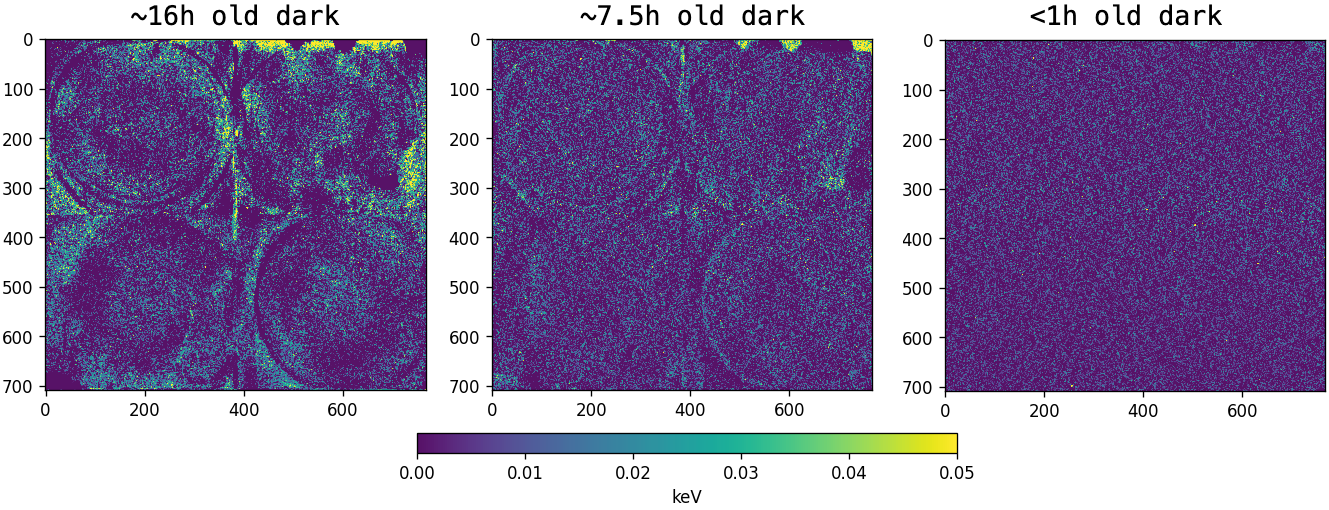Troubleshooting¶
Here are described some potential sources of issues and how to act on them.
No data on calng/offline¶
Unlike other detectors (such as the JUNGFRAU), the point for communication with Karabo is not in the detector itself, but in the PGP card mounted in a rack computer. Because the PGP card is typically always reachable, even if the detector is not powered, it may happen that commands sent via Karabo are apparently successful, i.e. no error message is displayed, but the PGP card is unable to further transmit these commands to the digital board of the detector. One example of this is if the detector is set to acquisition mode when it is not powered: the control device (MID_EXP_EPIX[1,2]/DET/CONTROL) on Karabo will change to ACQUIRING without raising an error, although the detector is not actually doing anything.
In case the controller is in ACQUIRING but the image on the online preview is not updating or there is no detector data on the raw offline files, most likely the detector is not powered, which can be checked in the power supply section of the main EPIX[1,2] scenes. When the detector truly is in acquisition mode, the receiver device (MID_EXP_EPIX[1,2]/DET/RECEIVER) will change from PASSIVE to ACTIVE, and the RxRate property of the device will update with values fluctuating around 10 Hz.
Ring patterns on ASICs¶
A ring pattern in the ASICs such as the ones in the image below can sometimes be visible in the corrected image, particularly when using high exposure times (order of hundreds of microseconds) for which there is a decrease in signal-to-noise ratio. It is not clear if the effect comes from the doping process of the sensor, or defects induced during bump bonding. In practice, there is a slow drift of the pixel offset in this ring structures when the detector is operated for many hours, even if the operating conditions are stable. These effect can however be easily compensated by taking darks frequently, as also demonstrated in the picture below.

Other general safety considerations¶
The most crucial aspects to keep in mind for the safe operation of the detector are:
- Do not provide HV before when LV is OFF.
- When providing HV, always use a value within the operating range (20 - 200 V). Biasing below 20 V may damage the ASICS.
- If temperature exceeds 35°C, power down the detector (following the power down procedure). There is most likely a problem with the water cooling. Check that chiller is ON, the H2O flow sensor is updating and values are >4, and the water pipes are properly connected to the VCR connectors.
- If the Peltier element is used to cool the sensor below 15°C, use nitrogen flush and monitor the reading from the humidity sensor in the detector.
- If relative humidity read by the detector sensor is above dew point, power down the detetor (following the power down procedure). Flush with nitrogen for some time before trying to power on again. If humidity is still high, confirm that the nitrogen flow is reaching the detector and that it is sufficient: the N2 flow sensor (MID_EXP_EPIX/ASENS/M1_H1) should be above 200 mL/min, and it maxes out at 262, so that value is also fine.
- When used in vacuum, HV should be OFF during venting/pumping, particularly for pressures between 0.1 - 100 mBar, due to the risk of electrical arcing on this Paschen curve minimum.